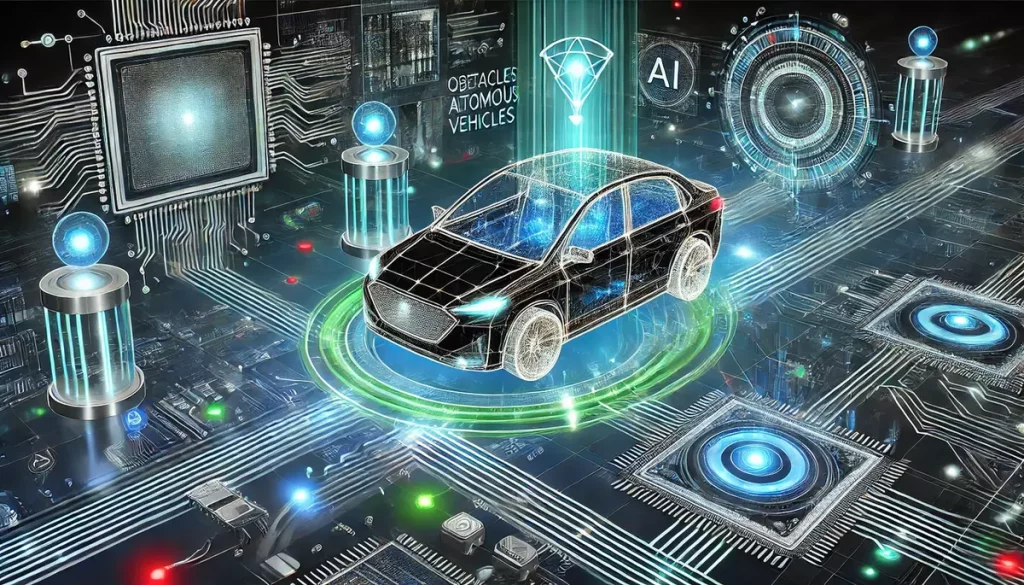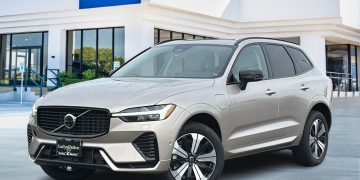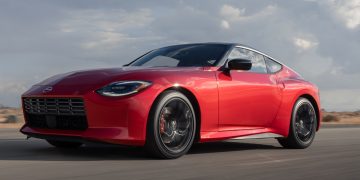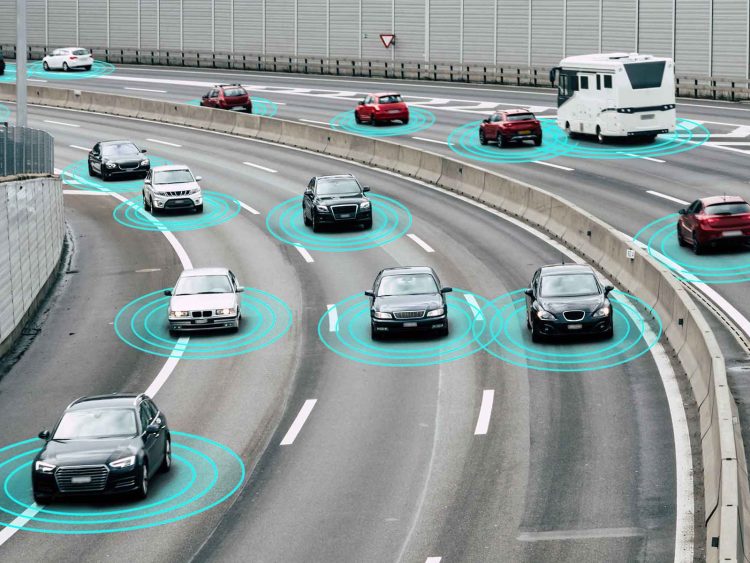Introduction
The automotive industry has entered a transformative era, with new technologies continuously emerging and reshaping how vehicles are designed, built, and driven. Car manufacturers are pushing the boundaries of innovation, experimenting with a wide range of cutting-edge technologies that have the potential to revolutionize the driving experience. From Artificial Intelligence (AI) and 5G connectivity to advanced driver assistance systems and smart vehicle technology, the latest advancements promise to enhance vehicle performance, safety, efficiency, and overall user experience.
This article delves into some of the most exciting and groundbreaking technologies currently being tested by car manufacturers, exploring their potential impact on the industry and the future of driving.
Innovations: A Deep Dive Into the Latest Technologies Being Trialed by Car Manufacturers
1. Artificial Intelligence (AI) and Machine Learning
Artificial Intelligence (AI) is one of the most transformative technologies in the automotive sector, with its applications ranging from autonomous driving systems to personalized in-car experiences. Car manufacturers are incorporating AI into various aspects of vehicle technology to enhance safety, optimize performance, and improve user convenience.
Autonomous Driving: One of the most well-known applications of AI in cars is in the development of autonomous driving technology. Self-driving cars rely on AI algorithms to interpret sensor data, make real-time decisions, and navigate complex driving environments. Companies like Tesla, Waymo, and General Motors are investing heavily in AI-driven autonomous vehicles, aiming to create cars that can drive themselves with minimal human intervention.
AI-powered autonomous systems utilize deep learning, a subset of machine learning, to improve their decision-making abilities as they gather more data from their surroundings. Over time, these systems can learn to recognize road signs, pedestrians, cyclists, and other vehicles, allowing for safer and more efficient navigation on the road.
AI for Personalization: AI is also being used to create more personalized in-car experiences. For example, AI can learn a driver’s preferences and habits, adjusting seat positions, cabin temperature, and music choices accordingly. Additionally, AI-powered virtual assistants, such as Amazon’s Alexa or Google Assistant, are increasingly being integrated into vehicles, allowing drivers to control in-car functions with voice commands.
Predictive Maintenance: AI is being used to predict when a vehicle’s components are likely to fail, reducing the risk of breakdowns. By analyzing data from various sensors, AI systems can identify patterns and forecast potential mechanical issues before they occur, enabling timely maintenance and reducing repair costs.
2. 5G Connectivity and V2X Communication
5G technology, with its ultra-fast data transmission speeds and low latency, is another revolutionary innovation making its way into the automotive industry. Car manufacturers are testing 5G connectivity to enable real-time communication between vehicles, infrastructure, and other devices, known as Vehicle-to-Everything (V2X) communication.
V2X Communication: This technology allows vehicles to communicate with each other and the surrounding infrastructure, such as traffic lights, road signs, and even pedestrians’ smartphones. With V2X, vehicles can share information about their speed, location, and trajectory, enhancing road safety by alerting drivers to potential hazards. For example, a car could warn a driver of an upcoming collision or alert them to a pedestrian crossing the road.
Autonomous Vehicle Development: The integration of 5G and V2X communication is crucial for the successful deployment of autonomous vehicles. Real-time, low-latency communication between vehicles and infrastructure is essential for autonomous systems to make quick, accurate decisions. 5G ensures that the necessary data can be transmitted with minimal delay, reducing the risk of accidents and improving the overall safety and efficiency of self-driving cars.
Smart City Integration: 5G connectivity also plays a vital role in the development of smart cities. As urban areas continue to grow, the need for efficient, safe, and sustainable transportation systems becomes increasingly important. By integrating 5G-enabled vehicles with smart city infrastructure, cities can manage traffic flow, reduce congestion, and optimize energy use, contributing to a more sustainable urban environment.
3. Augmented Reality Dashboards
Augmented Reality (AR) dashboards are an exciting new technology that car manufacturers are testing to enhance the driving experience. AR dashboards use a combination of cameras, sensors, and display technology to overlay digital information onto the physical world in real-time, providing drivers with valuable insights while keeping their attention on the road.
For example, AR dashboards can display navigation information directly on the windshield, highlighting the best route to take or pointing out key landmarks. AR systems can also provide safety alerts, such as warning drivers about potential hazards, like pedestrians or other vehicles, in their path. By integrating these elements directly into the driver’s field of view, AR dashboards aim to reduce distractions and improve safety.
Furthermore, AR technology can be used to enhance the vehicle’s overall interface. Drivers can control various in-car functions, such as climate control or media settings, using intuitive gestures, minimizing the need for physical buttons or dials.
4. Smart Vehicle Features and Internet of Things (IoT)
The integration of the Internet of Things (IoT) into vehicles is rapidly gaining traction. IoT allows cars to connect with other devices, systems, and networks, creating a more seamless and connected driving experience. Smart vehicles equipped with IoT technology can communicate with home automation systems, public transportation networks, and other connected vehicles, making them an integral part of the broader ecosystem.
In-Car IoT Devices: Car manufacturers are integrating IoT-enabled devices into their vehicles, such as sensors that monitor tire pressure, fuel levels, or battery health in real-time. These sensors send data to cloud-based platforms that analyze the information and provide actionable insights to both drivers and service technicians, enhancing vehicle performance and safety.
Vehicle-to-Home Integration: IoT also enables vehicles to integrate with smart home systems. For example, a driver could remotely control their home’s thermostat, lighting, or security system through their car’s infotainment system. Additionally, vehicles equipped with IoT technology can be used to track their location, send maintenance alerts, or help drivers find nearby charging stations, creating a truly connected driving experience.

5. Battery Technology and Charging Innovations
As electric vehicles (EVs) continue to grow in popularity, advancements in battery technology and charging infrastructure are crucial for improving the driving experience. Car manufacturers are testing new types of batteries that are more efficient, have longer lifespans, and charge more quickly than traditional lithium-ion batteries.
Solid-State Batteries: One of the most promising advancements in battery technology is the development of solid-state batteries. These batteries use a solid electrolyte rather than a liquid one, resulting in higher energy density, faster charging times, and increased safety. Solid-state batteries are expected to offer a range of improvements over current battery technologies, including longer driving ranges and shorter charging times.
Wireless Charging: Wireless charging is another technology being tested in the automotive sector. This technology allows vehicles to charge without the need for physical cables or connectors. Using electromagnetic fields, wireless charging stations can transmit energy to a vehicle’s battery, providing a more convenient and efficient charging experience. While still in its early stages, wireless charging has the potential to become a mainstream solution for electric vehicle owners.
6. Advanced Driver Assistance Systems (ADAS)
Advanced Driver Assistance Systems (ADAS) are a set of technologies designed to assist drivers in various tasks, improving safety and reducing the risk of accidents. ADAS technologies include lane departure warnings, automatic emergency braking, adaptive cruise control, and parking assistance.
Car manufacturers are continuously testing and refining ADAS to create more advanced systems that bring vehicles closer to full autonomy. One notable innovation is the integration of AI into ADAS, allowing systems to learn from driver behavior and external factors, enhancing the overall driving experience.
ADAS is also increasingly relying on sensor technologies, such as cameras, radar, and LiDAR (Light Detection and Ranging), to provide real-time data about the surrounding environment. This data is processed by onboard AI systems to make split-second decisions that can prevent accidents and improve driver comfort.
Impact on the Industry: How These Technologies Could Revolutionize Driving
The technologies mentioned above have the potential to drastically change the way we drive, interact with vehicles, and approach road safety. Here are a few ways these innovations will revolutionize the automotive industry:
1. Autonomous Driving and Safety
The development of autonomous driving technology has the potential to significantly reduce traffic accidents caused by human error. With the help of AI, V2X communication, and advanced sensor systems, self-driving cars can navigate complex environments more safely than human drivers, while also providing a more relaxed driving experience.
Autonomous vehicles could also make transportation more accessible, particularly for individuals with disabilities, the elderly, or those unable to drive due to health issues.
2. Enhanced In-Car Experience
Smart vehicles and augmented reality dashboards will revolutionize the in-car experience by offering real-time, hands-free interactions. This will enable drivers to stay focused on the road while accessing important information and controlling various car functions with ease.
Furthermore, AI-driven personalization will tailor the driving experience to each individual’s preferences, from climate settings to music choices and seat adjustments, making every journey more enjoyable.
3. Sustainability and Efficiency
Advancements in battery technology and wireless charging solutions will make electric vehicles more efficient, reducing the environmental impact of transportation. By increasing the range of EVs and reducing charging times, these innovations will make electric cars more practical and convenient for everyday use.
The integration of smart technology in vehicles also allows manufacturers to optimize energy consumption, improving fuel efficiency and reducing emissions across all vehicle types.
Conclusion
The automotive industry is at the forefront of technological innovation, with car manufacturers testing and implementing a wide array of groundbreaking technologies. From AI and 5G to autonomous driving, battery advancements, and smart vehicle features, these technologies hold the promise of transforming the way we drive, making transportation safer, more efficient, and more enjoyable.
As these innovations continue to evolve, we can expect to see a revolution in the automotive industry that will change not only how vehicles are used but also how they interact with the world around them. The future of driving is not just about getting from point A to point B; it’s about enhancing the entire journey through the power of technology.


































Discussion about this post